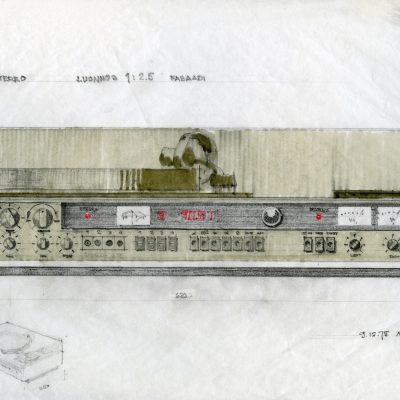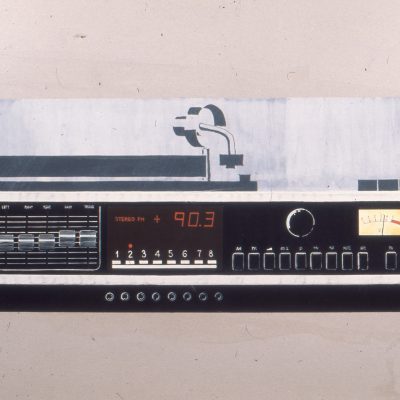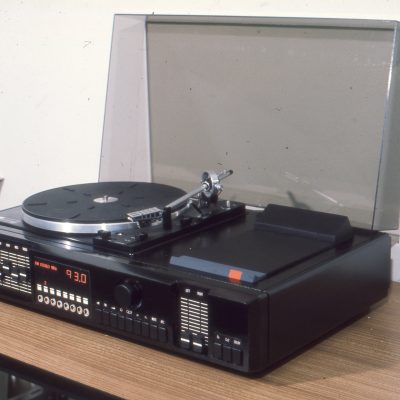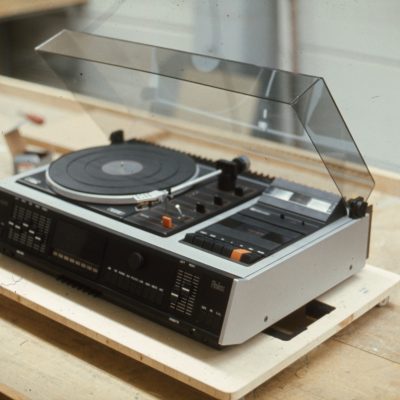Finlux TAPC4040
I visualised my own preconceptions of the product in a sketch before the design began and showed the image to key people. These were Esa Paananen (electronics design), who led the project, assisted by Jorma Salmi (sound design), Jorma Kosunen (head of domestic marketing), assisted by Heikki Kuutti and Lasse Björkman (purchasing manager). I received generally disapproving comments from them, the various reasons for which I will try to answer in the following pictures
The designer's job is to invent and make new forms and new usability and new manufacturability understandable. From these proposals, the decision-makers will then decide how to proceed. Design is the will of customers and management. The designer had sought comments on his ideas on the TV side directly from the Quelle chain, which could have caused a stir in the "domestic market".
The TAPC4040 was a very advanced device. Unlike its competitors, it had a so-called rear amplifier that produced "reflected sounds", so it provided a third dimension in addition to the normal two dimensions of stereo listening, e.g. in a music hall, a sense of distance from the orchestra and the walls. This was close to modern 3D listening and unique at the time - although partly possible with Köykä's patented amplifiers (Köykä's own and Salora). There was a legal dispute about this, which Finlux won.
For reasons of time and resources, the designer hired two model builders, design students Pekka Toivola and Erkki Vainio, who sometimes slept on the designer's floor in Lohja or in a guesthouse in Virkkala, as the project often continued for 16 hours a day. The designer sketched the overall design and partdrawings, while the mechanical designers made production drawings based on the built models. So, every visible part of the mechanics was made by hand and the handmade working prototype was presented to the public at a fair as if it was a finished product. This saved time for the tooling of the plastic parts, which at the time took about three months.



